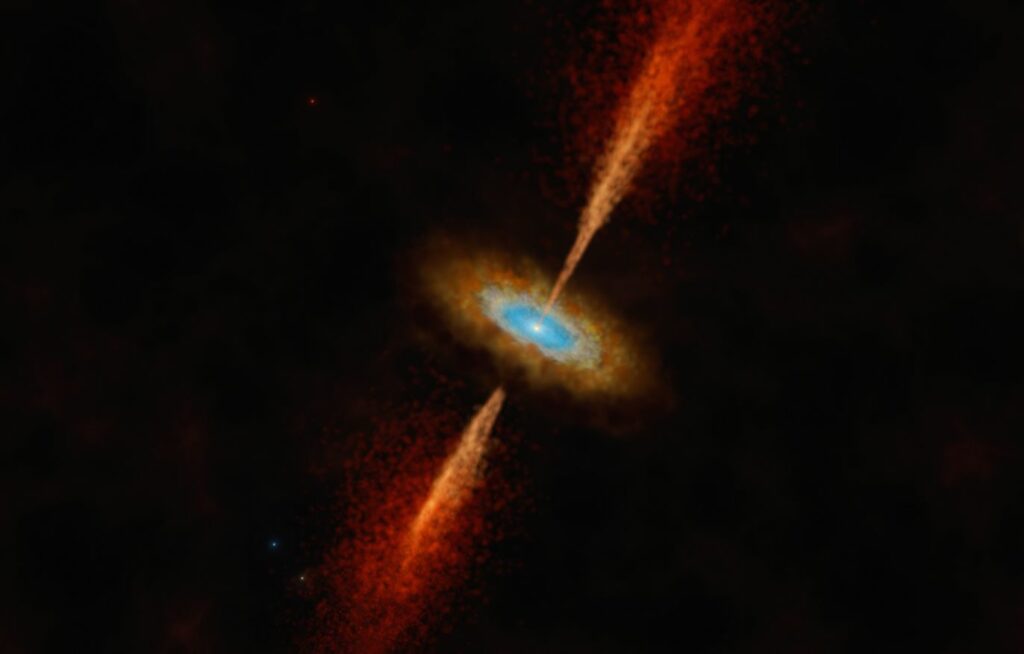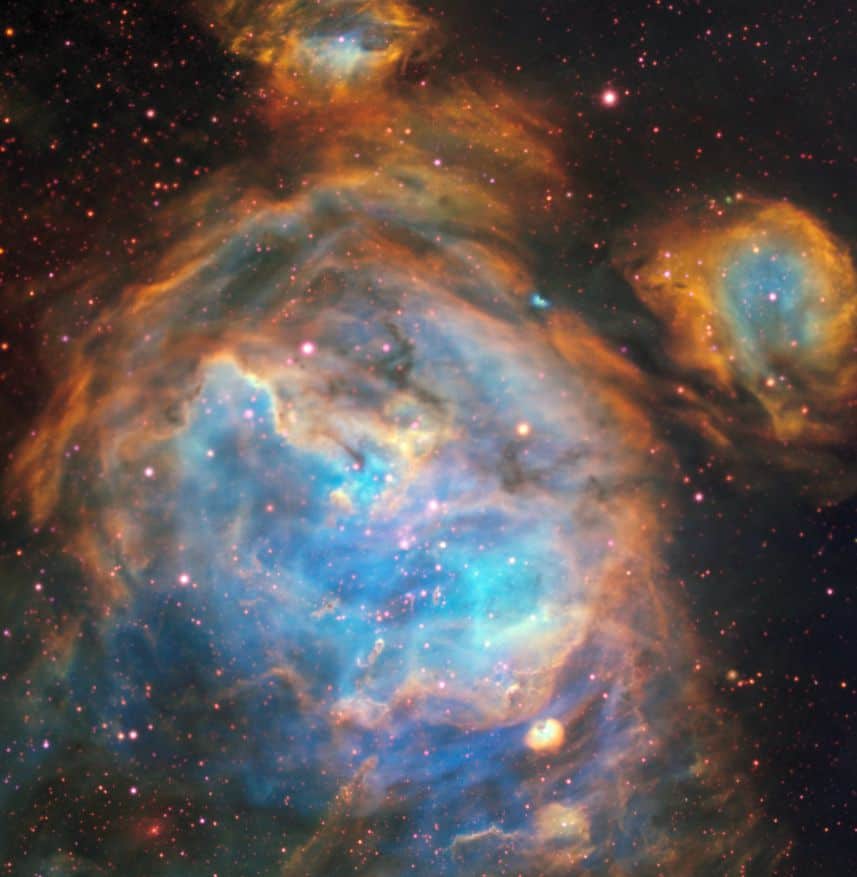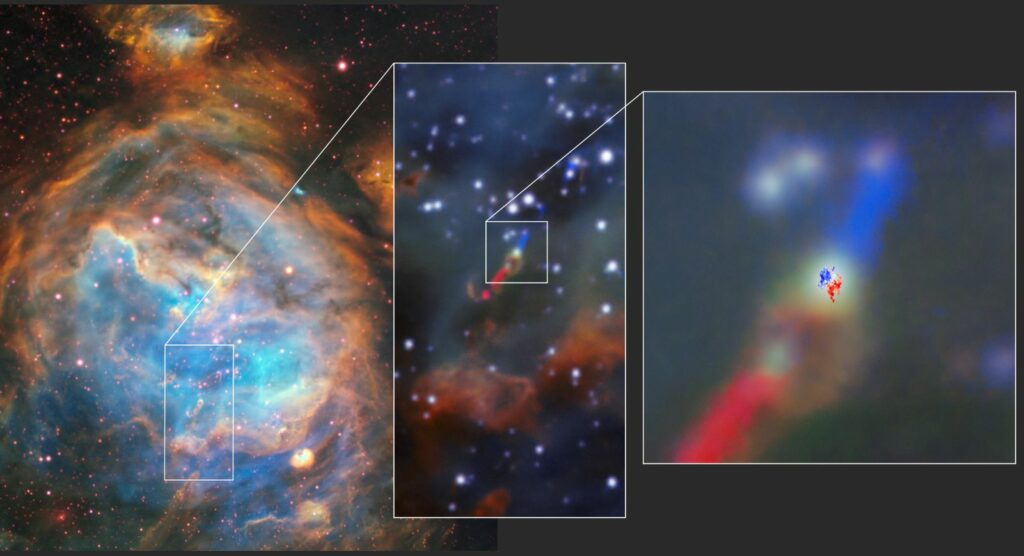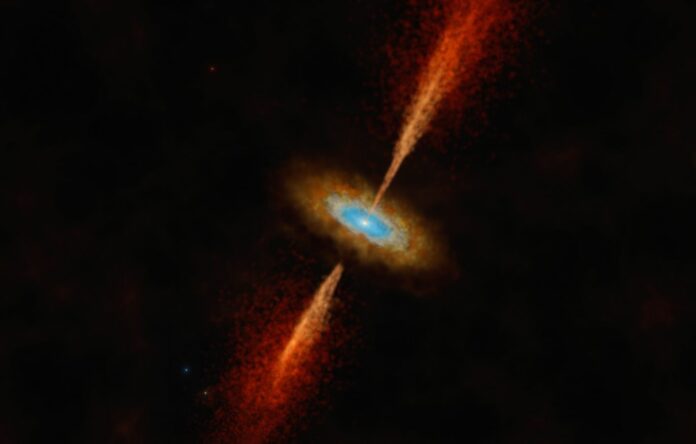In a remarkable discovery, astronomers have detected the first circumstellar disc around a young massive star in the Large Magellanic Cloud, 163,000 light-years away, using ALMA’s advanced capabilities.
‘I Could Not Believe’ That We’ve Detected ‘the First Extragalactic Accretion Disc’
Astronomical Breakthrough: New research reveals a massive young star, growing and accreting matter from its surroundings and forming a rotating disc.
A team of international astronomers, led by Durham University and including members from the UK Astronomy Technology Centre, has made a landmark discovery: the first-ever observation of a rotating disc around a high-mass star forming outside our Milky Way, in another galaxy.
This disc encircles a young, massive star situated in the stellar nursery known as N180, located in the Large Magellanic Cloud, a neighboring dwarf galaxy. Situated 163,000 light years from Earth, this disc is the most distant of its kind around a massive star to be observed directly.
Researchers used the Atacama Large Millimeter/submillimeter Array (ALMA) in Chile, partnered with the European Southern Observatory (ESO), to detect motion in the gas surrounding a young stellar object in the Large Magellanic Cloud. These motions are consistent with a Keplerian accretion disc, a structure known to facilitate star growth by channeling infalling material.

Published in the journal Nature, the team’s findings reveal that as matter gravitates toward a growing star, it doesn’t fall straight onto it. Instead, it forms a spinning disc around the star, with the inner parts of the disc rotating more quickly. This varying speed is a key indicator for astronomers of an accretion disc’s presence.
Dr. Anna McLeod of Durham University’s Centre for Extragalactic Astronomy, the study’s lead author, remarked: “When I first saw evidence for a rotating structure in the ALMA data, I could not believe that we had detected the first extragalactic accretion disc; it was a special moment.

“We know discs are vital to forming stars and planets in our galaxy, and here, for the first time, we’re seeing direct evidence for this in another galaxy.
“We are in an era of rapid technological advancement when it comes to astronomical facilities.
“Being able to study how stars form at such incredible distances and in a different galaxy is very exciting.”
Massive stars, like the one observed, typically have shorter lifespans and form faster than smaller stars like our Sun. In our galaxy, observing these massive stars is challenging due to the dusty material obscuring them during their formative stages.
This system stands out as it is optically visible, possibly because of the lower dust and metal content in its surrounding environment. This visibility grants astronomers a clearer view of accretion dynamics usually hidden by gas and dust.
The analysis of the disc indicates an inner region rotating in a Keplerian manner, transitioning to material falling in at greater distances from the star, which is estimated to be about 15 times the mass of our Sun.

While the disc shares many characteristics with those found in the Milky Way, notable differences, such as its stability against fragmentation due to the Large Magellanic Cloud’s low metal content, are observed.
The detection of this extragalactic circumstellar disc enhances the potential for finding more such systems with ALMA and the upcoming Next Generation Very Large Array (ngVLA), contributing significantly to our comprehensive understanding of star and disc formation across different galactic environments.
Source: 10.1038/s41586-023-06790-2
Image Credit: ESO
